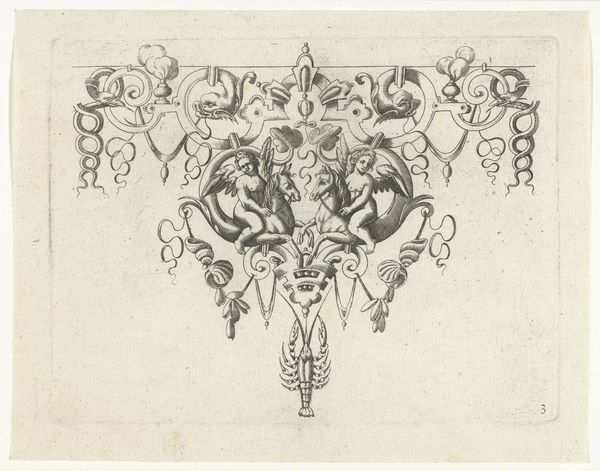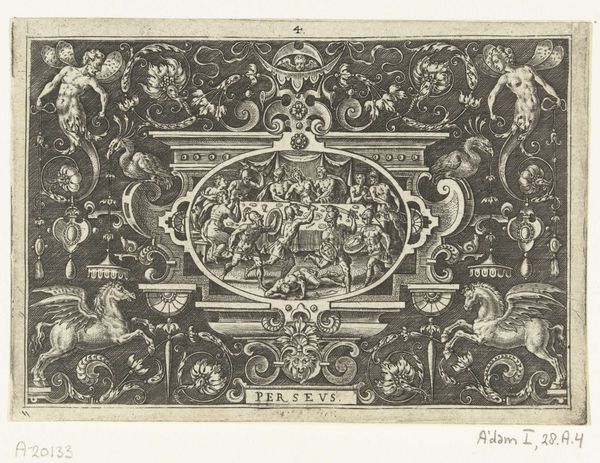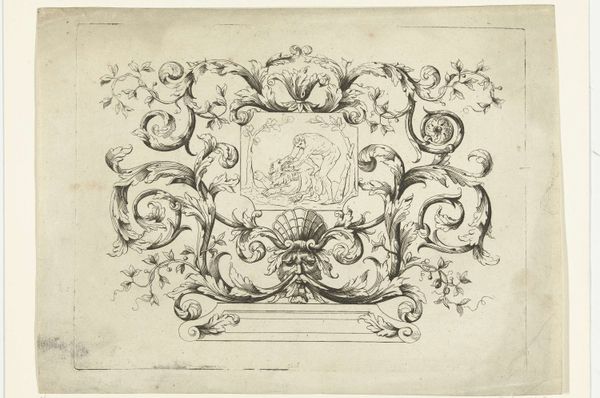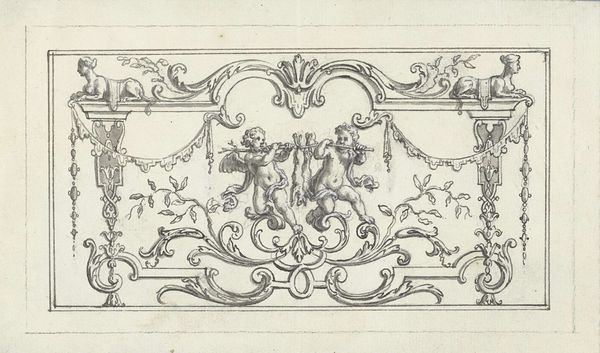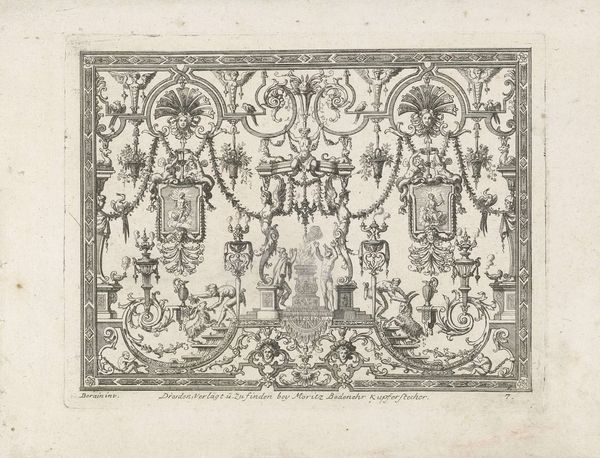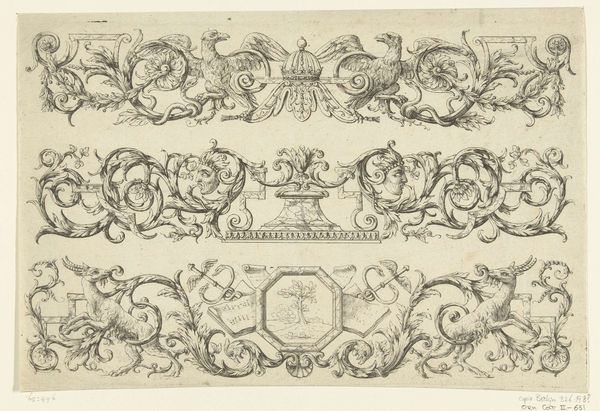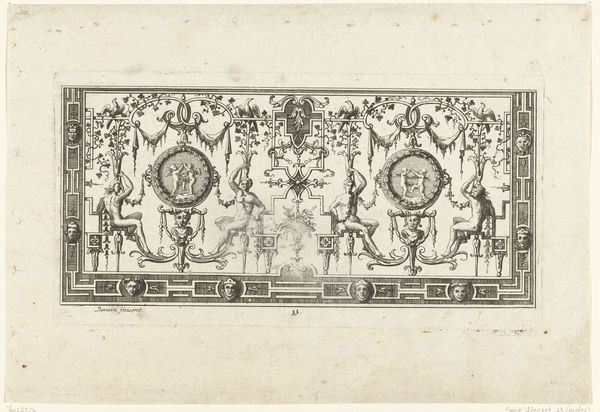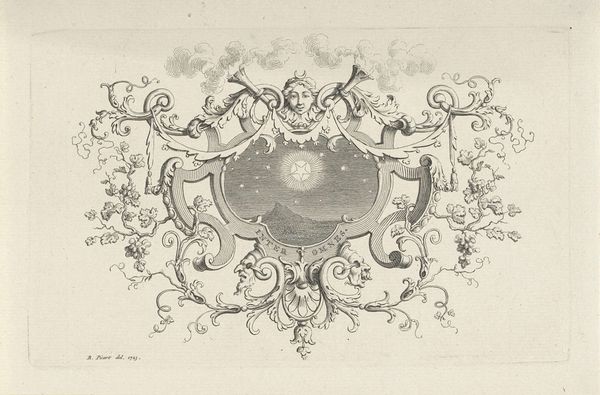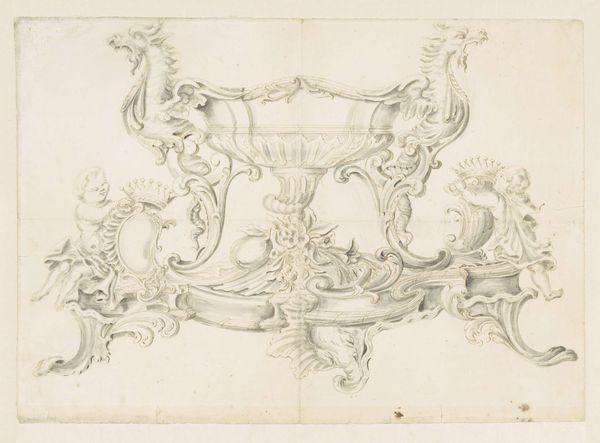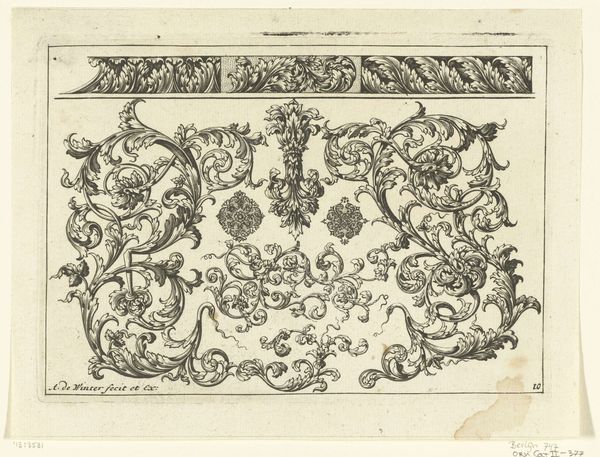
Ornamentomlijsting met rolwerk en figuren, waarin landschap met de Barmhartige Samaritaan 1591 - 1633
0:00
0:00
print, engraving
#
baroque
#
pen drawing
# print
#
pen sketch
#
old engraving style
#
landscape
#
history-painting
#
engraving
Dimensions: height 204 mm, width 270 mm
Copyright: Rijks Museum: Open Domain
Editor: Here we have an engraving from between 1591 and 1633, titled "Ornamentomlijsting met rolwerk en figuren, waarin landschap met de Barmhartige Samaritaan." It's attributed to an anonymous artist and is currently housed at the Rijksmuseum. The ornate frame surrounding the landscape immediately grabbed my attention. What formal elements do you observe that stand out to you? Curator: The dynamic interplay between the central image and its elaborate frame presents a fascinating formal problem. The artist constructs a hierarchy of visual information, yes? Notice how the landscape, rendered with delicate precision, is contained within the bolder, more assertive lines of the ornamental border. How do you think the composition's structure guides the viewer's eye? Editor: Well, the frame definitely draws you in first, and then your eye is led to the more serene landscape in the middle. It's like two contrasting worlds coexisting. Do you see the starkness in the images contained as symbolic? Curator: Exactly. Semiotically, consider the frame itself. What is it doing with respect to boundaries and containment? Its intricate patterns—the scrollwork, the figures—compete for attention, creating a tension between surface and depth. Do you perceive any relationships or disruptions with how they correspond within this symbolic relation? Editor: It seems disruptive—the figures look classical and idealized, while the landscape is more naturalistic. It's almost like the artist is juxtaposing different styles to make a point, creating a dialectic relationship. Curator: Precisely. The structural opposition enhances our understanding of the image’s inherent dichotomies – the artifice of ornamentation versus the apparent authenticity of nature. Think about it. Editor: That is something. Looking at it through a formalist lens really sheds light on the power of composition and structure. I appreciate the image more when breaking down its artifice. Curator: It exposes inherent oppositions to highlight something that could have previously been lost in subjective analysis. Thinking of art as an intersectionality that must meet certain needs.
Comments
No comments
Be the first to comment and join the conversation on the ultimate creative platform.

